Top tips to respect wildlife and stay safe
The chance to observe wildlife as they go about their natural lives is a fascinating experience. With this privilege comes the responsibility to treat wildlife with the respect they need and deserve. Learn how to respect wildlife with these safety tips.
1. Learn about the wildlife in the Parks Canada place you plan to visit

Each of Parks Canada’s places is home to a variety of wildlife. Find out important information about animals that live in the place you will be visiting by researching the Parks Canada website before you arrive.
With over 220 destinations across Canada, there is so much to discover. Explore national parks, historic sites, marine conservation areas and a national urban park from coast to coast to coast. These protected areas are home to thousands of different species of mammals, birds, reptiles, plants and other wildlife.
2. Feeding wildlife is illegal
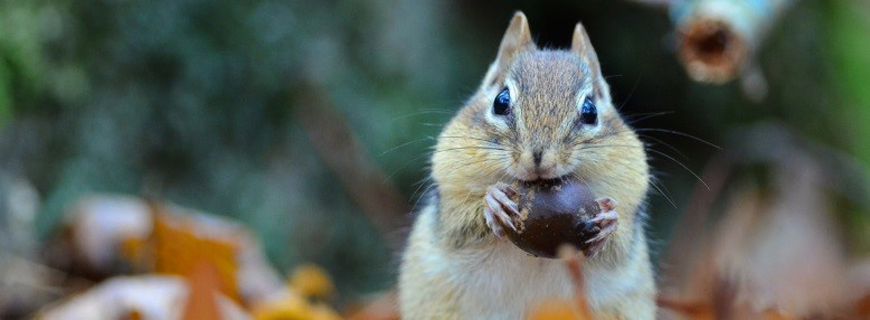
Feeding wild animals, accidentally leaving food out, or not properly disposing of garbage, teaches animals that humans provide food. Once an animal has tasted human food, it may begin to seek it above all other sources of natural foods.
Feeding wildlife in a national park or a national historic site is illegal and you may be charged under the Canada National Parks Act. This includes feeding them directly by offering them food, or indirectly by leaving unattended food or garbage for them to find.
3. Keep your dog on a leash at all times – it is the law
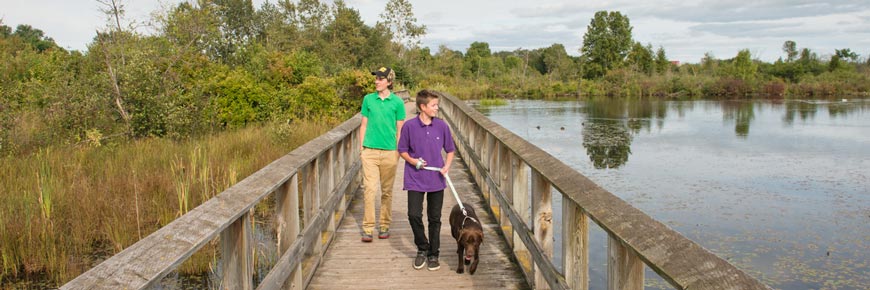
Like wild animals such as wolves and coyotes, domestic dogs can cause stress for wildlife as they may be seen as a threat. Off-leash dogs can also trigger aggressive behaviour from wildlife. To prevent unsafe situations, dogs must be on a leash and under control at all times.
Studies have shown that dogs off-leash is one of the most common causes of wildlife attacks. If your dog is off-leash, you may be charged under the Canada National Parks Act and pay fines up to $25,000.
4. Keep your picnic site and campsite clean

Many already know that leaving food out at a picnic site or campsite can attract wildlife, but did you know that wildlife is also attracted to any item that has an odour/smell? This includes garbage, dishes, pots and pans, stoves, coolers, dog dishes and toiletries (like soap, shampoo and toothpaste). If you need to keep an alcohol-based hand sanitizer on your person or in your tent, choose a product that is unscented and keep it in a sealed container.
Keep your picnic site and campsite clean of attractive smells by storing all scented items in your vehicle or in designated storage lockers. As soon as you are done cooking, eating and washing up, put everything away in a vehicle or storage locker.
5. Hike after breakfast and before supper - travel in tight groups
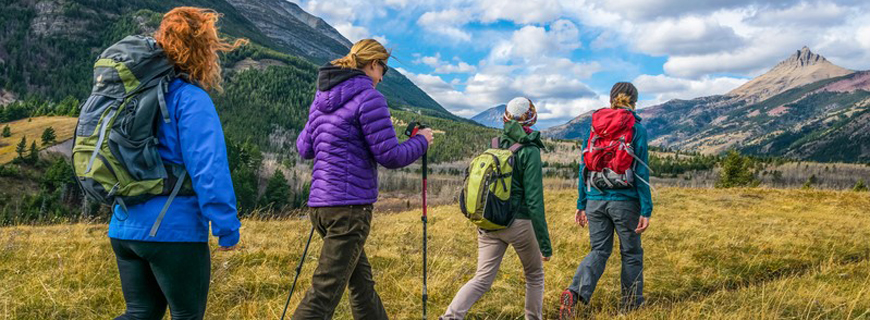
Many animals are most active in the early morning hours (sunrise), in the early evening (sunset) and during the night. For your safety, always hike during the day and check the weather and trail conditions before leaving. When on the trails, remember to:
- always carry bear spray, ensure it is accessible and know how to use it before heading out on the trails;
- make noise to let wildlife know you are in the area;
- be aware of your surroundings at all times and never wear ear buds or headphones to avoid surprise encounters that do not give wildlife time to decide how to react; and
- tell someone where you are going and when you expect to return.
Did you know? Travelling in a group and making noise is safer than travelling by yourself.
6. If you see wildlife beside the road, slow down, stay in your vehicle and move on
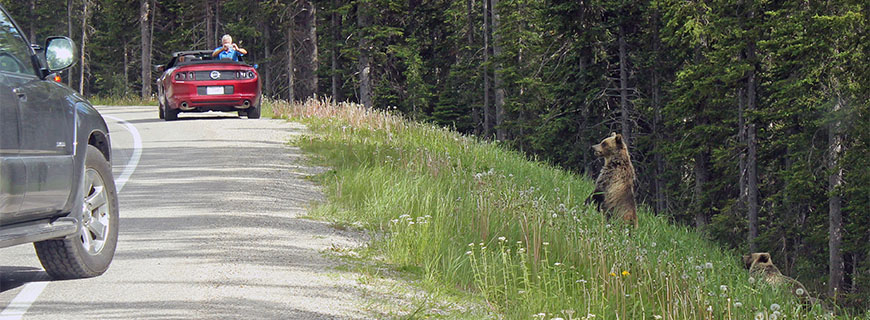
Pulling over to observe wildlife on roads is hazardous. Stopping in the middle or along the side of the road puts yourself, wildlife and other motorists at risk. It teaches animals that vehicles on highways are nothing to be afraid of. In Parks Canada’s protected places, too many animals are killed along highways each year.
Pulling over is also dangerous because stopped vehicles become visual obstructions for other drivers. If you see wildlife along the road, slow down, stay in your vehicle and move on. Always obey posted speed limits.
7. Give wildlife space
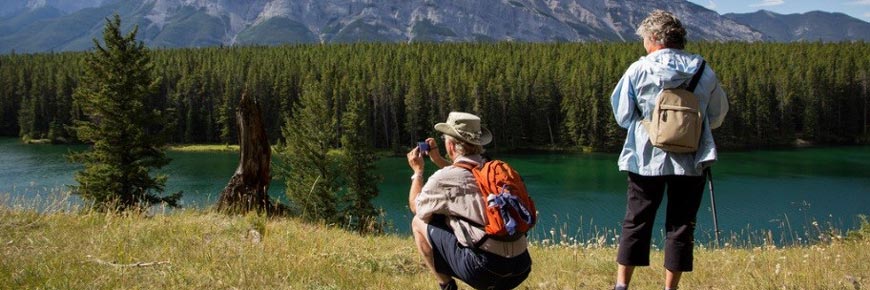
Bring your binoculars, or a telephoto lens to capture a photo of a wild animal in its natural environment. Remember that although this may be a once in a lifetime experience for you, these types of encounters may be happening many times a day for the animal.
Selfies with wildlife are not safe. Never turn your back or attempt to take a photo of people with wildlife in the background.
Stay at least 30 m (3 buses) away from large animals such as deer, moose and elk, and 100 m (10 buses) away from bears, wolves, coyotes and cougars. Approaching wildlife or allowing wildlife to approach you can lead to them no longer being wary of people and puts yourself, others and wildlife at risk.
If you see others trying to approach wildlife, warn them of the dangers to themselves, to others and to the animal.
8. Stay alert and be aware of your surroundings
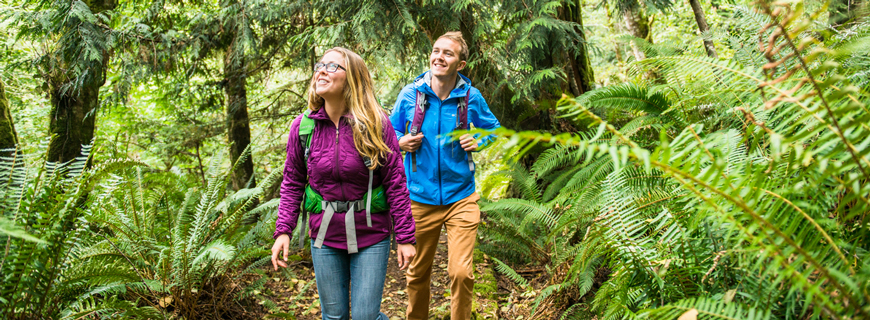
Surprising wildlife can cause stress to the animal, and create a dangerous encounter. You can help eliminate this by noticing the “signs” that wildlife might be nearby, including fresh tracks, droppings or freshly scraped soil or tree bark. Never wear ear buds or headphones when out on the trails.
If you find signs of wildlife in the area, make noise, travel in tight groups, stay calm and leave the area.
9. Carry bear spray, ensure it is accessible and know how to use it before heading out on the trails
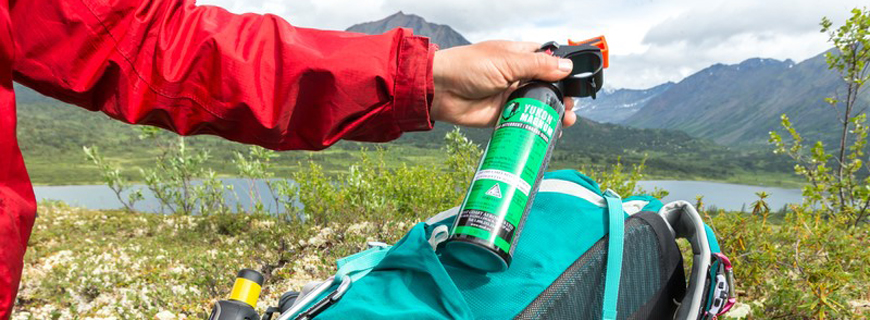
Bear spray can be an effective deterrent in a surprise close encounter with a bear, and with other large animals such as elk, bison, moose, coyotes, wolves and cougars.
Bear spray is available at various retail outlets.
Bear spray contains capsaicin – a chemical found in chili peppers. It irritates eyes and skin and could affect breathing but the spray is not lethal.
10. Always stay on designated trails and respect area closures and restrictions

Trails in Parks Canada places are designed to take you to interesting locations while keeping you safe from hazards and protecting the environment. Always stay on designated trails and find out about trail closures or restrictions from Parks Canada in advance. Be prepared to adjust your travel plans if necessary.
11. Drones disturb wildlife
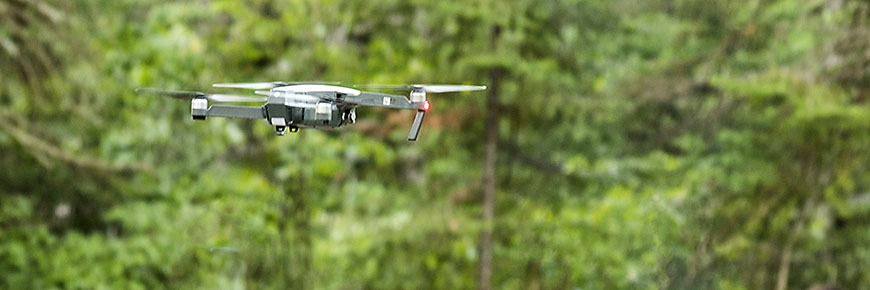
Drones are prohibited in all Parks Canada places. Drones disturb wildlife, disrupting their natural behaviour and risking injury. Violators may be charged under the Canada National Parks Act and pay fines up to $25,000. Leave your drone at home or in your vehicle.
- Date modified :